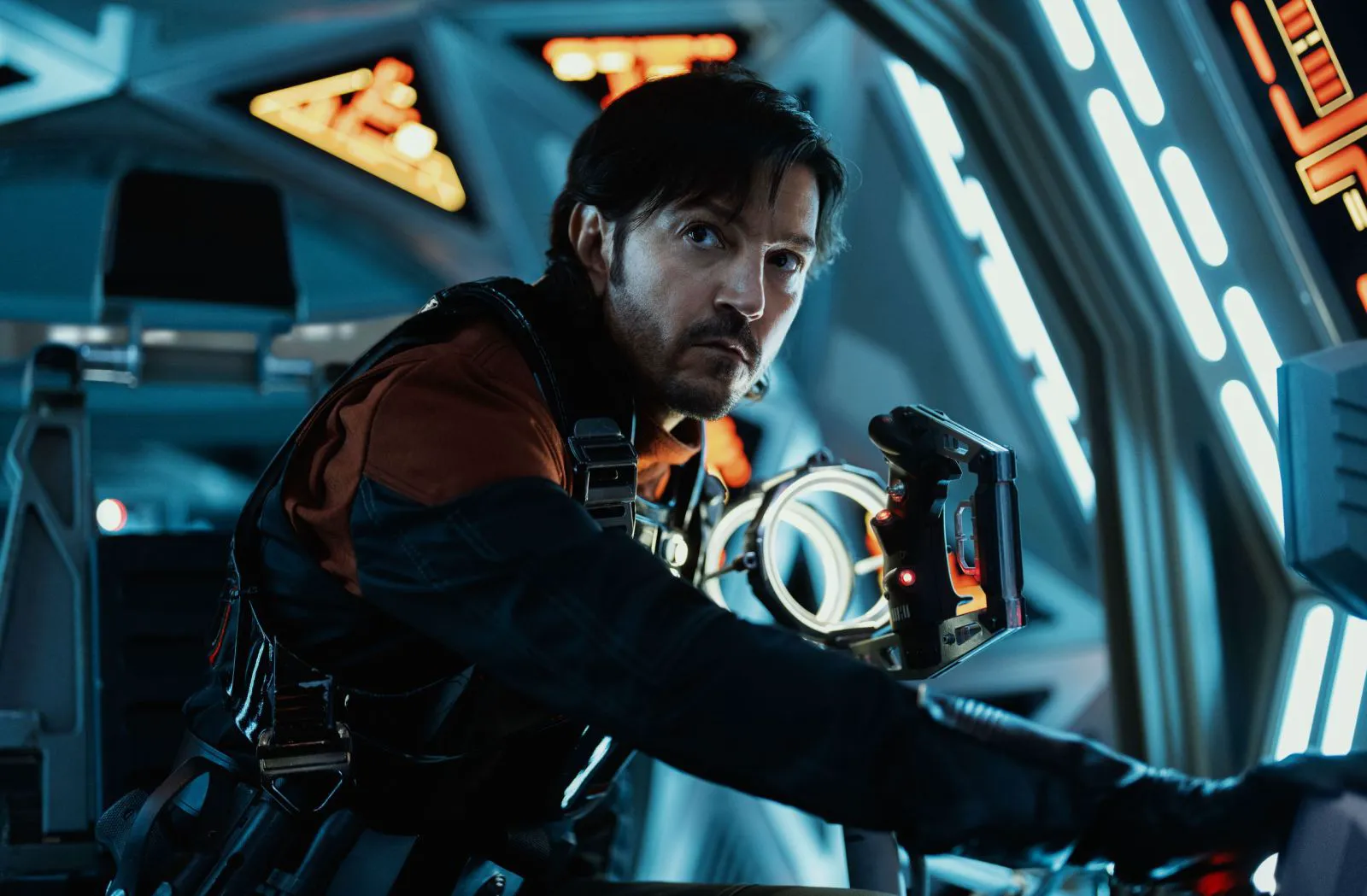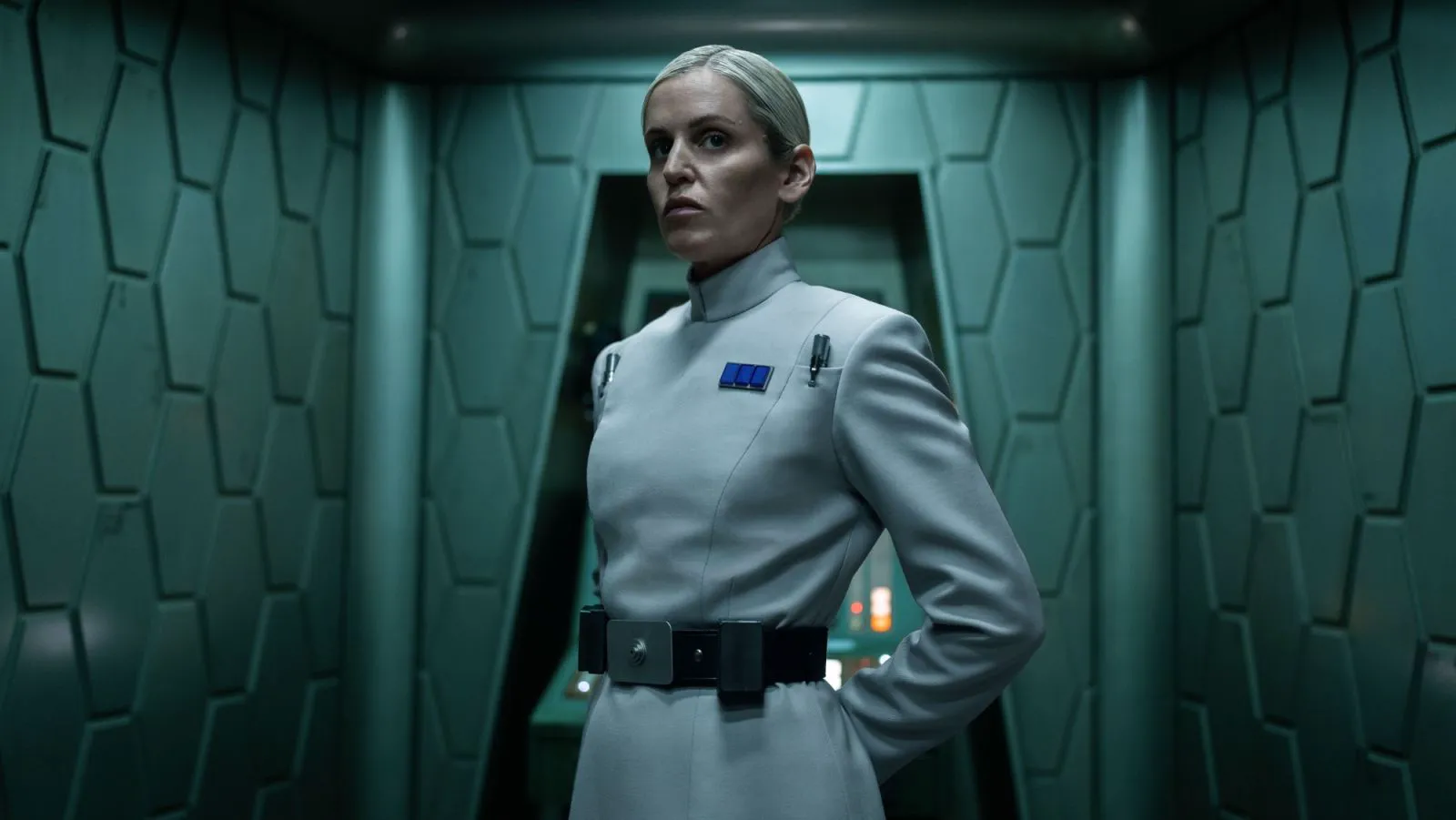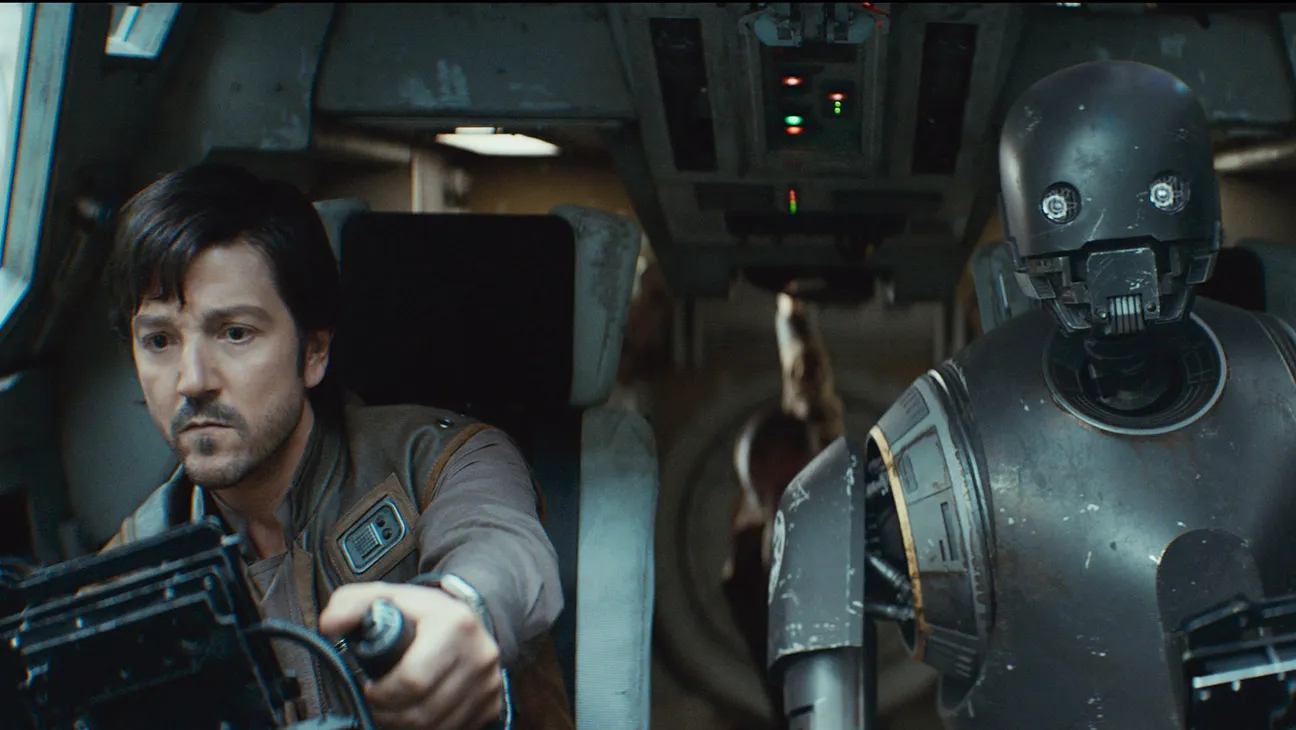Andor: The Darkest Corner of the Star Wars Galaxy
George Lucas’s original “Star Wars” trilogy became canonical not only because of its genre appeal. The reason was the clear anti-imperialist rhetoric embedded in the lines of characters who later became legendary. Decades after unsuccessful prequels, sequels, and ambiguous Disney+ series, Disney+ releases “Andor” — the riskiest and perhaps most ideologically significant project in the entire universe. A spin-off of the film “Rogue One,” which itself stood out from the franchise logic: in its finale, all the main characters of the Resistance, fighting against imperial tyranny, die. Among them is Cassian Andor (Diego Luna).

Diego Luna as Cassian Andor in a still from the series “Andor”
The Reluctant Rebel
A year after the events of the first season, Cassian reluctantly becomes a full-fledged leader and the main hope of the Resistance. The hero is much more willing to spend time with his beloved Bix (Adria Arjona), but the rebellion does not tolerate delays or indulgences. The bureaucratic apparatus of the Empire is aimed at destroying the planet Ghorman — its subsoil stores minerals necessary for the construction of the Death Star. The fascist intentions of Orson Krennic (Ben Mendelsohn) and his odious henchmen lead to mass protests, and the Resistance movement rapidly sweeps across the Galaxy.

Denise Gough as Dedra in a still from the series “Andor”
A New Structure and Inspiration
“Andor” has acquired a fresh structure: each year in the lives of the characters is given three episodes (a total of 12 episodes in the season). Despite the name that has become a brand, Cassian is only part of the uprising. The main part of the season takes place on Ghorman. If in “A New Hope” Lucas relied on the fresh wounds of Vietnam, then “Andor” is inspired by the Dutch Resistance movement of the 1940s, directed against Nazi Germany. For the creator of “Andor,” Tony Gilroy, who also worked on “Rogue One,” the most important task remains the person in everyday life, in all details, intentions, doubts. Cassian’s soul naively demands peace, but he is forever taking risks for the collective good. His comrade Bix is terrorized at night by nightmares of the past, many of which come to life in reality. The wise Lyuten (one of the best roles in Stellan Skarsgård’s resume), with decades of underground work, continues to function as a puppeteer from the shadow of his antique store. His main source of information, ally Senator Motma (Genevieve O’Reilly), after the forced marriage of her daughter for convenience, releases control over her own life. The woman negotiates behind the scenes of palaces and is not afraid to publicly declare the imperial genocide taking place on Ghorman, which endangers her existence.

Diego Luna as Cassian Andor in a still from the series “Andor”
The Villains’ Transformations
Transformations are also undergone by secondary antagonists. Cyril (Kyle Soller), an idealistically minded employee of the Imperial Security Bureau, naively believed in the bright future of the regime and relied on his patron and lover Didra (Denise Gough) in everything. Both are literally obsessed with the idea of capturing Andor, whom they consider the head of the “hydra” — if it is cut off, the entire revolution will come to an end. As soon as Cyril finds himself on Ghorman, his illusions are similarly dispelled, because chaos is sown not by rebels at all, but by stormtroopers in response to peaceful protests by Ghormans demanding independence and prosperity. The maniacal Didra soon also goes beyond imperial control and eventually ends up in custody.
A Darker, More Realistic Star Wars
Despite a weak start and a multi-million dollar budget, “Andor” is not afraid to experiment with the genres of spy thriller and social drama. The action is deliberately devoid of humor, which is quite explained by the tragedy of the times on both sides of the screen. The artist, in the words of singer Nina Simone, is obliged to reflect on them, therefore Gilroy, together with his brother Dan (“Stringer”), Bo Willimon (“House of Cards”) and other co-authors, adequately thickens the colors, while echoing the manifesto from the first season. “Freedom is a pure idea… The front line is everywhere, and even a tiny act of disobedience moves it forward.” Without a single lament or moralizing, “Andor” demonstrates how the consciousness of people changes, activates and freezes before the threat of dehumanization.
The second season ends a few minutes before the start of “Rogue One.” Before flying out on another mission, Andor carefully waters the house plants. With this everyday, inconspicuous gesture, the creators once again emphasize: the Death Star has nothing to offer in response to the self-sacrifice and mesmerizing beauty of humanism. The pure idea continues to live — even at the cost of inevitable bloodshed.